Have you ever wondered if you can grow saffron in Northern Iowa/Southern Minnesota/South Dakota? Or if you can grow saffron in the Northern Midwest at all? So have I. Several internet searches left me with no definitive answer. Some sites said saffron could be grown as far north as zone 3. Others suggested saffron was unlikely to flower farther north than zone 6. Perhaps this was a crazy idea, but I decided to give growing saffron in Northwest Iowa a try. Besides, growing saffron in Florida turned out to be more successful than expected, so what did I have to lose?
I cannot guarantee that saffron will flower for you in Iowa or other northern Midwestern states. However, I have had one successful harvest in Northwest Iowa (zone 4b). Thus, if you give saffron a try, I believe you have a good chance at success.
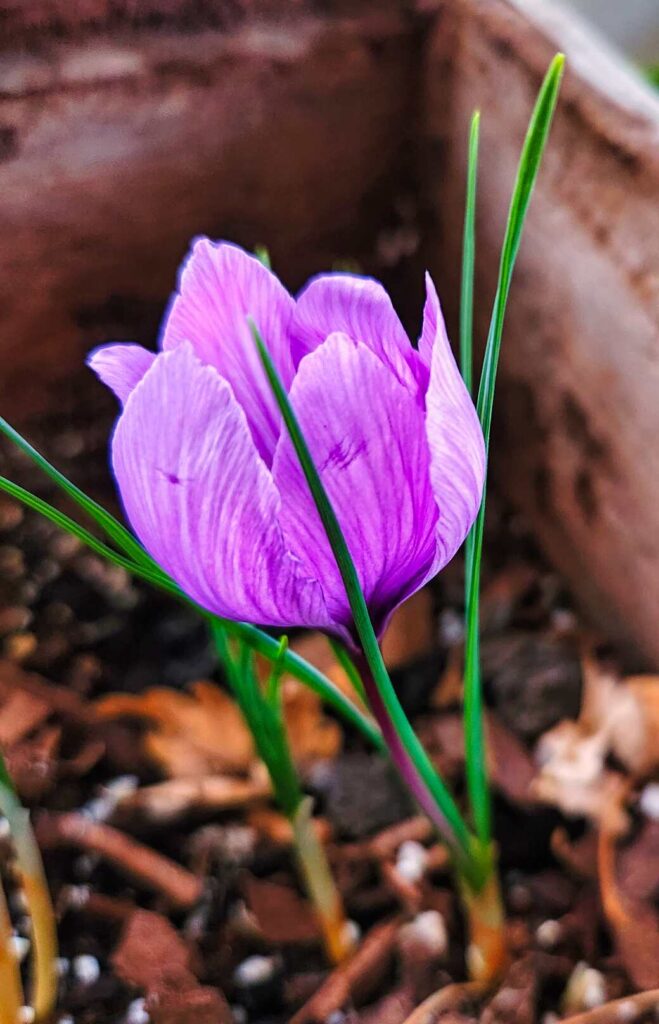
Why Grow Saffron
If you’ve read my post on growing saffron in Florida, feel free to skip to the next section. If not, read on to learn how to grow saffron in the north.
Saffron has a delicious floral/earthy taste and is used in many rice dishes, such as paella or risotto. It is one of the most expensive spices by weight. Spending $20 on saffron corms that will grow for you year after year rather than on one small jar of the dried spice may be a good use of money.
Saffron may also be a potent medicinal. For example, saffron may improve mood in those with depression. Studies now also suggest that saffron may help protect memory/cognitive function, and may even decrease symptoms in severe Alzheimer’s Disease.
Even if you don’t want to use saffron as a flavoring or a medicinal, saffron still brings beauty to the garden. Saffron’s purple flowers bring a pop of color in the fall, when many other plants are dying back. Additionally, saffron is shade-tolerant and requires little care.
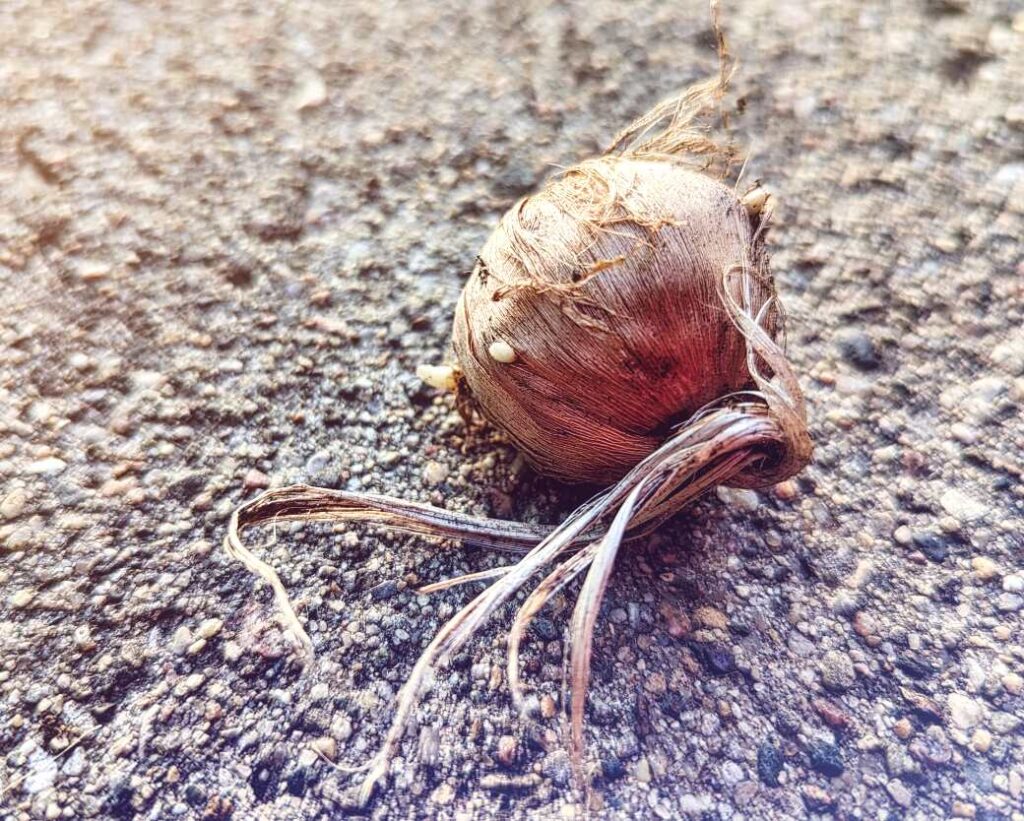
Sourcing Saffron
The saffron crocus (crocus sativus) is not commonly sold in big box stores. Some local nurseries may carry saffron, but I have had no luck with those in Iowa. Thus, you will likely need to source it online. I have purchased saffron corms (bulbs) through High Country Gardens and Baker Creek Heirloom Seeds in the past. I have been pleased with both sources, as all the corms I received from each were viable and sprouted. As saffron crocus is a fall flower, it is typically only available for sale in August/September. Saffron corms will multiply if properly tended, so you may only have to purchase them once.
How to Grow Saffron in Iowa/the northern Midwest
I recommend Northern gardeners plant saffron corms in late August to early September. Plant in well-draining soil so your corms do not rot. In this climate, saffron seems to prefer partial sun, but will also tolerate shade or full sun. Water when dry. Soon grass-like green shoots will form. Check periodically for damage, as saffron is a favorite of grubs, slugs, and worms. Additionally, you may wish to protect your newly planted corms with netting. Prior to rooting, your corms can easily be dug up by mice and squirrels, who will eat them tasty treats. If happy and uneaten, your saffron plants should produce flowers within a couple weeks of sprouting.
An early hard freeze may prevent your plants from flowering. If a freeze is in the forecast, simply cover your corms with a sheet, with a layer of fallen leaves, or another protective barrier. Then uncover as the day warms. Your saffron should continue to grow. Saffron corms may also be dug up, re-planted in pots, and brought indoors prior to a hard freeze. This year a hard freeze was forecast just as my corms were sprouting, so I left some outdoors with a protective leaf covering, and some I re-planted indoors. To my surprise, both groups grew well, and the disruption in the newly potted group did not negatively impact flowering.
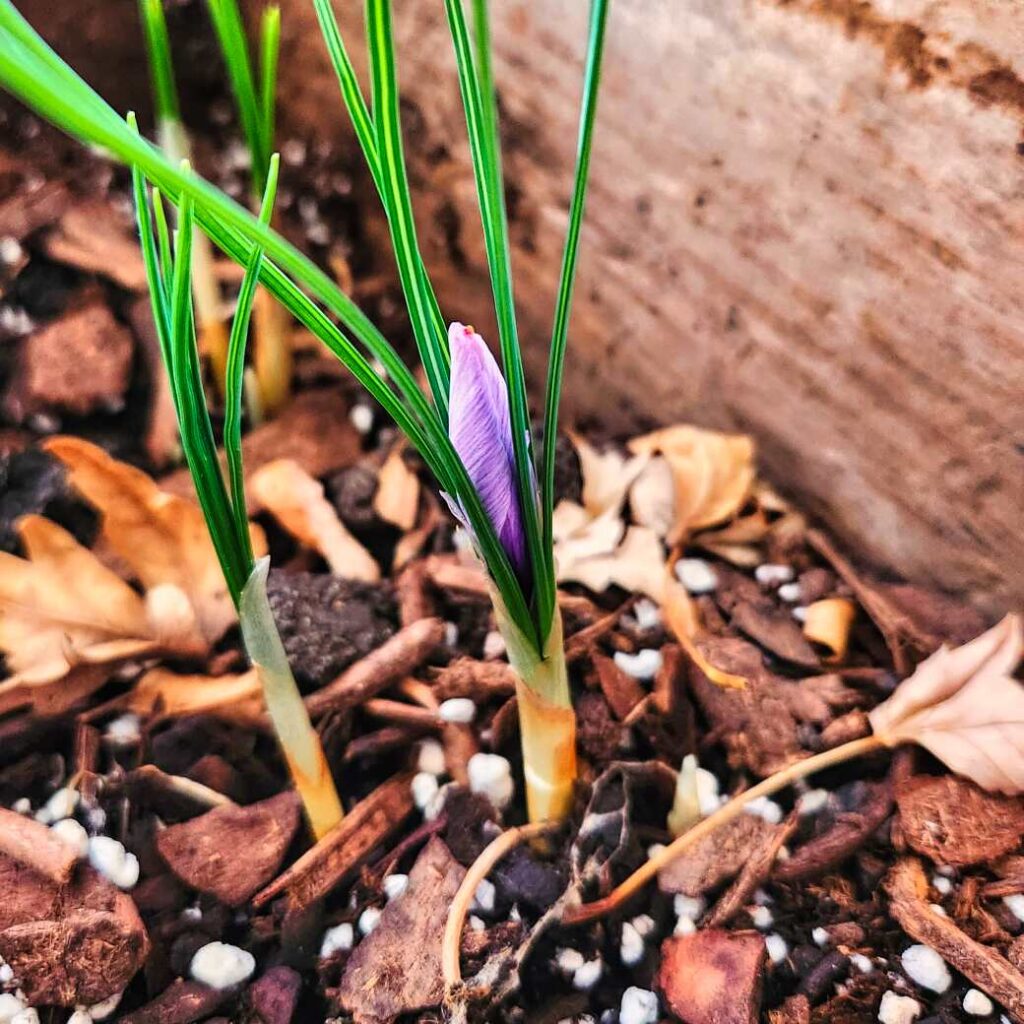
Harvesting
Once flowers appear, harvest immediately. The orange or red stigmas are the spice saffron. To pick, either cut at the base with small scissors or remove with a tweezers. Saffron can be used fresh for cooking. Saffron can also be dried for culinary or medicinal purposes. To dry, simply set on a paper towel for a few days. The red stigmas will shrink and become breakable. Store in an air-tight container for future use.
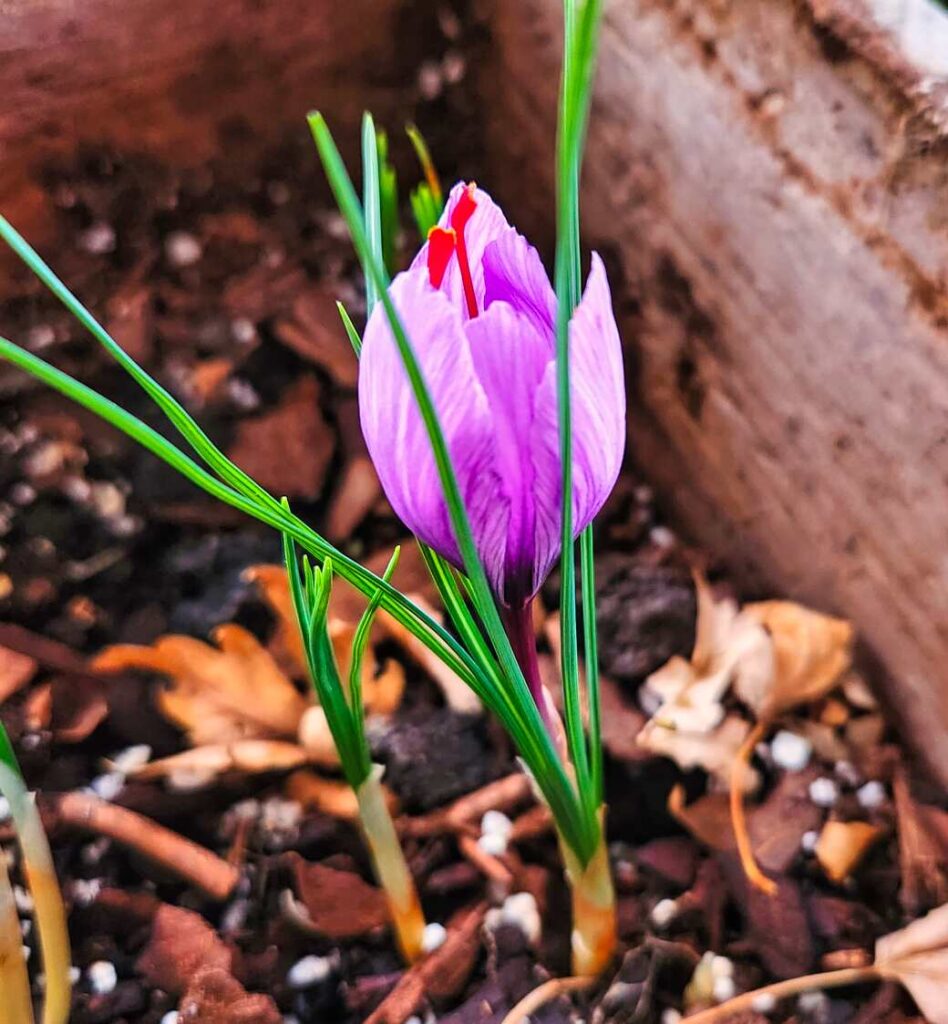
Saving Corms for Next Season
In cool climates, you may leave corms in the ground for next season, with a layer of mulch to protect from deep freezes. You may also dig them up after the plant has died back each fall/winter. This way you will not forget where you planted them or have pesky rodents turn them into snacks.
Each crom you plant should turn into several corms over the growing season. If you forget to keep watering the saffron after it flowers, these new corms will be tiny. Do not worry- in my experience, even tiny corms will sprout. Remember, however, that saffron does not like to sit in wet soil or the corms will rot. Only water if/when the soil becomes dry. You can ignore saffron during the winter, provided it has a layer of protection, such as mulch.
To save indoors, store corms in a paper bag in a relatively cool, dark location. So long as they stay dry, temperatures up to 80 degrees do not seem to harm the corms or negatively impact their viability the following fall. If you remember where you put them, replant the next August!
Looking for our fresh produce? You can find us at the Orange City, IA farmer’s market this summer (2023). We plan to have fresh vegetables, fruits, mushrooms, and herbs available this season. We’ll also be selling extra produce at our road market stand in Alton. Feel free to reach out if you’re looking for anything in particular! We can be reached at [email protected].
Want to get started growing another great spice/medicinal plant? Check out this post on turmeric varieties!

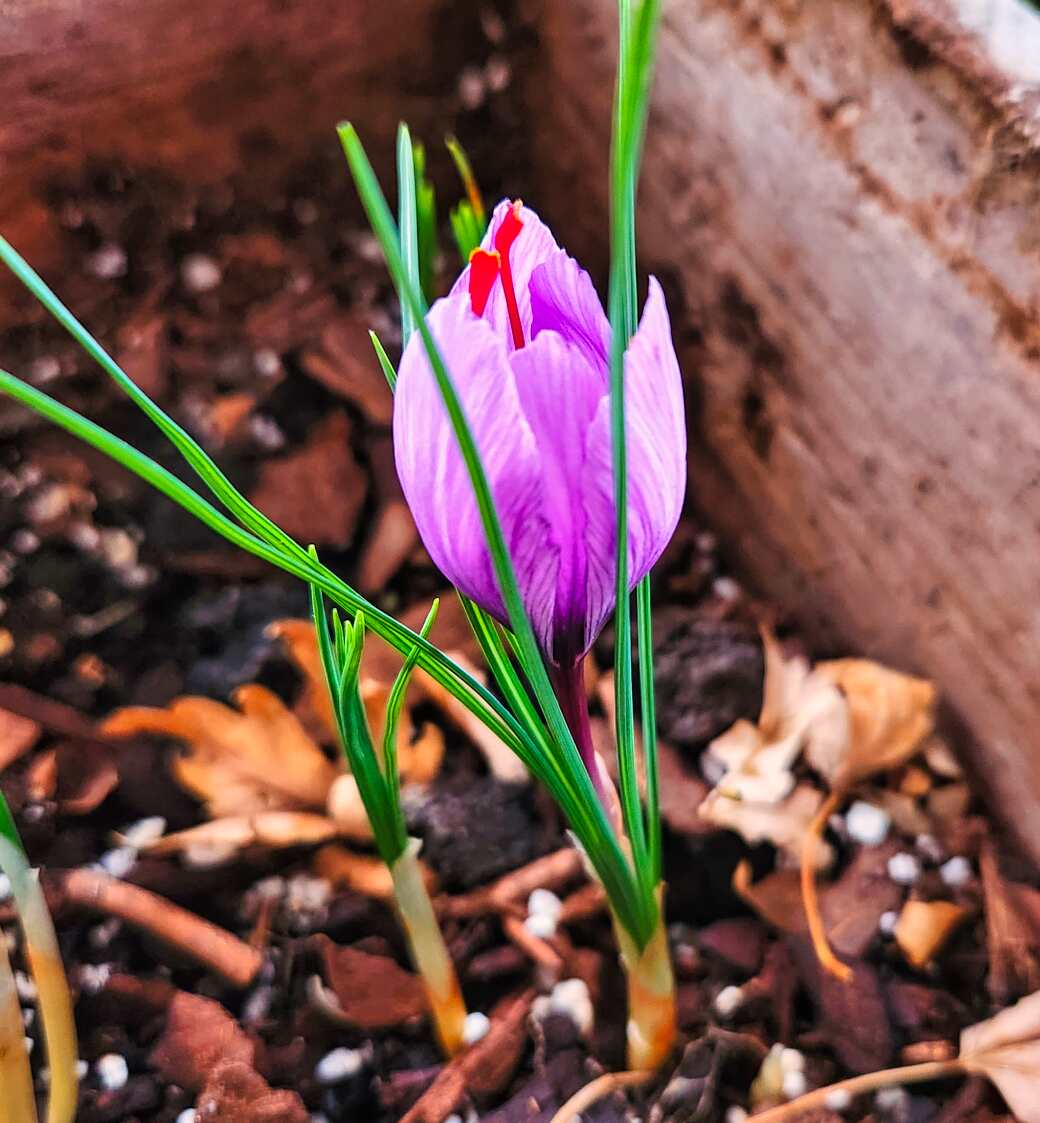




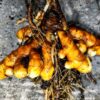
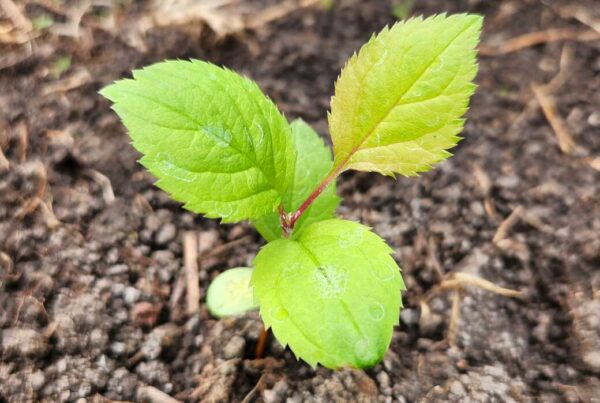
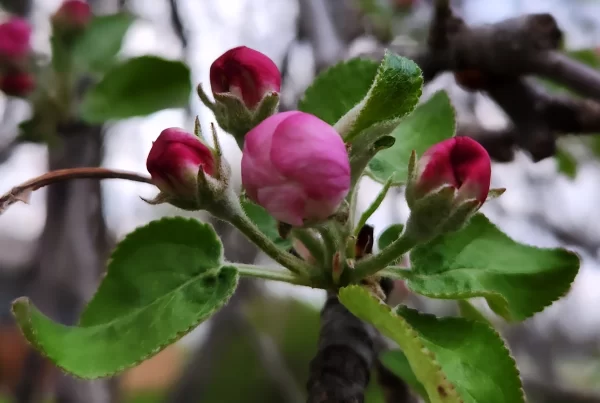
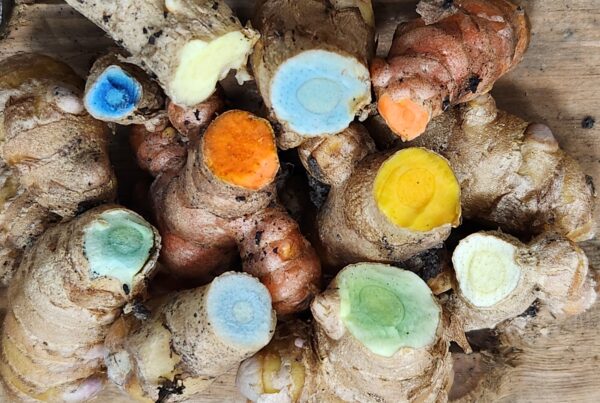

Not to make you grumpy, but it’s “corms” not “”croms”
Ah, you are absolutely correct. That’s why this site isn’t called Grumpy Pants Spelling! 🙂
Hope you have a non-grumpy Christmas!
Can saffron crocus be grown indoors in a controlled environment to ensure optimal growth and harvest, even in regions with harsh winter conditions?
Yes- I’ve had success growing saffron indoors. I’m currently experimenting with optimal conditions (i.e., temperature, light, humidity) and hope to have more wisdom here soon!